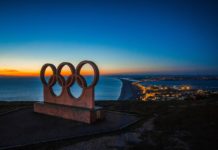In preparing for my five month journey to Jamaica, I was excited to learn how near my office would be to the National Gallery of Jamaica (NGJ). I anticipated quiet lunches at the gallery as I sat in the peaceful cool and reflected. It turns out that people who work in downtown Kingston don’t tend to go out for lunch, that I’m a bit of an oddity in my wanderings, and that I’d need much more than a lunch now and then to take in all the NGJ’s breadth and depth. In fact, my first visit to the gallery came in December when I attended the soft-opening of the Biennial 2014 exhibit.

The NGJ biennial shows began in 2002 and have steadily grown in popularity and scope. In addition to the main show at NGJ, this year’s iteration includes exhibits at National Gallery West in Montego Bay, at Devon House in New Kingston, and in a distributed installation by Blue Curry in downtown Kingston. This juried and invited exhibit has traditionally showcased Jamaican and Jamaican diaspora talent, but this year also includes artists from Trinidad, Barbados, Bermuda, Martinique/France and the Bahamas.
As my friend and I wandered the halls of the exhibit, I was reminded once again that I am an art-loving cliché – I know nothing. Powerful images spoke to me, though largely in a language I had trouble interpreting. Massive installations such as Camille Chedda’s award-winning Wholesale Degradables, in which faces of Jamaican men killed extra-judicially are painted inside and out of rows of hung grocery bags, unmistakably spoke to the frailty of life, and more specifically to the apparent disposability of particular lives in Jamaican society. Some bags hung empty – waiting for the next face to fill them. Even without a translation the faces and the blank spaces call out.
Kimani Beckford’s B.i.B is a stunning, shimmering portrait of a black woman whose afro surrounds her like a Renaissance halo. Her black on black face with vivid eyes gleams, and the surrounding gold work raises the painting to iconography and the young woman to divinity. Other collections were structured in such a way that the whole illuminated what individual pieces may not, while massive single-piece works spoke in their own monolithic way. I was particularly fascinated by Phillip Thomas’ IMF . . . (u***d). The massive six-panel multi-media work is built on a background of tiled Jamaican $1,000 bills that total JA$1,000,000 and incorporates images of a matador and butchered pigs. It invoked many more questions than answers.
The 2014 Biennial exhibit at NGJ is contemporary, modern, experimental, and cohesive. Video displays, intelligent groupings, complex installations and interactive works make even the most ignorant of viewers comfortable. In scratching a favourite quote in a beeswax ‘book’ I became, for a brief moment, a part of the show. In fact, the welcoming mood at NGJ is an appreciated change from more staid and solemn galleries. In the NGJ it is okay to talk, to ask questions, to laugh, and to learn. To me, those are activities a public gallery should invite.
The permanent exhibits at NGJ are also worth mentioning:
• The Historical Galleries quickly cover a large swath of history from pre-contact Taino First Nation culture, to Spanish colonization, the lives of the Maroons (former Spanish slaves who formed their own communities in the hills and remain a distinct part of Jamaican society), and British colonization.
• The period of history immediately surrounding Jamaican independence in 1962 is largely represented in the work of one prolific artist, Edna Manley in the gallery that bears her name. Manley’s sculptures are some of the most iconic public art in Jamaica, and the collection tells a story of a country and a society in transition. Manley’s is a particularly privileged view onto that society, but it is also a powerful one.
• The Mallica “Kapo” Reynolds Galleries houses Intuitive works by the premier self-taught Jamaican artist of the modern and contemporary periods. Reynolds was an essential artist in a Jamaica finding its roots in the 20th century, and his sculptures and paintings reflect both his deep spiritualism as a leader in the Zion Revival Church and his connection to the land. Reynolds’ work provides an important counterpoint to Manley’s perspective.
Biennial 2014 continues until March 15, 2015 and is worth consideration by anyone traveling to or living in Jamaica. Opening hours and fees vary by venue and can be confirmed at https://nationalgalleryofjamaica.wordpress.com/.

















